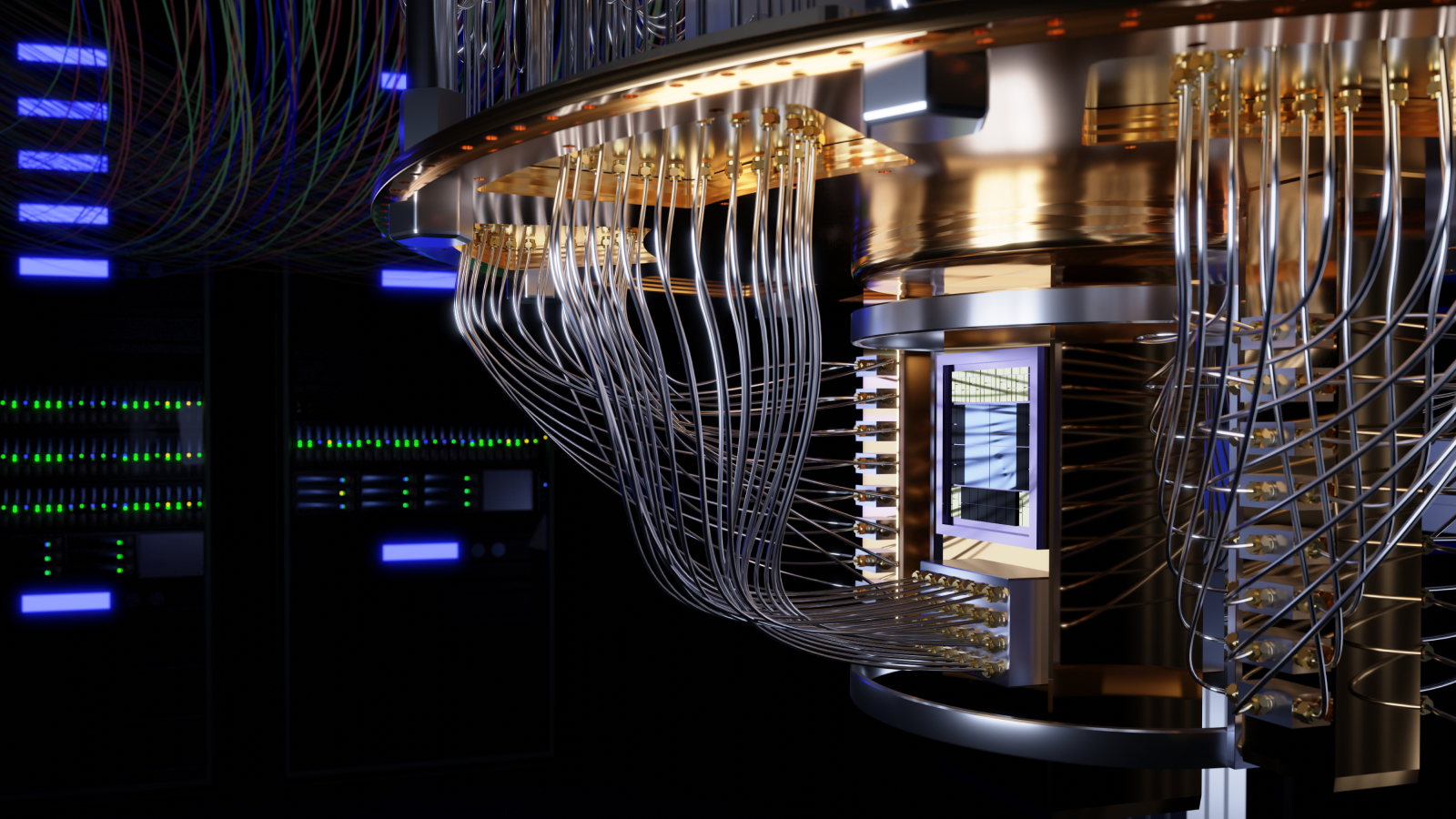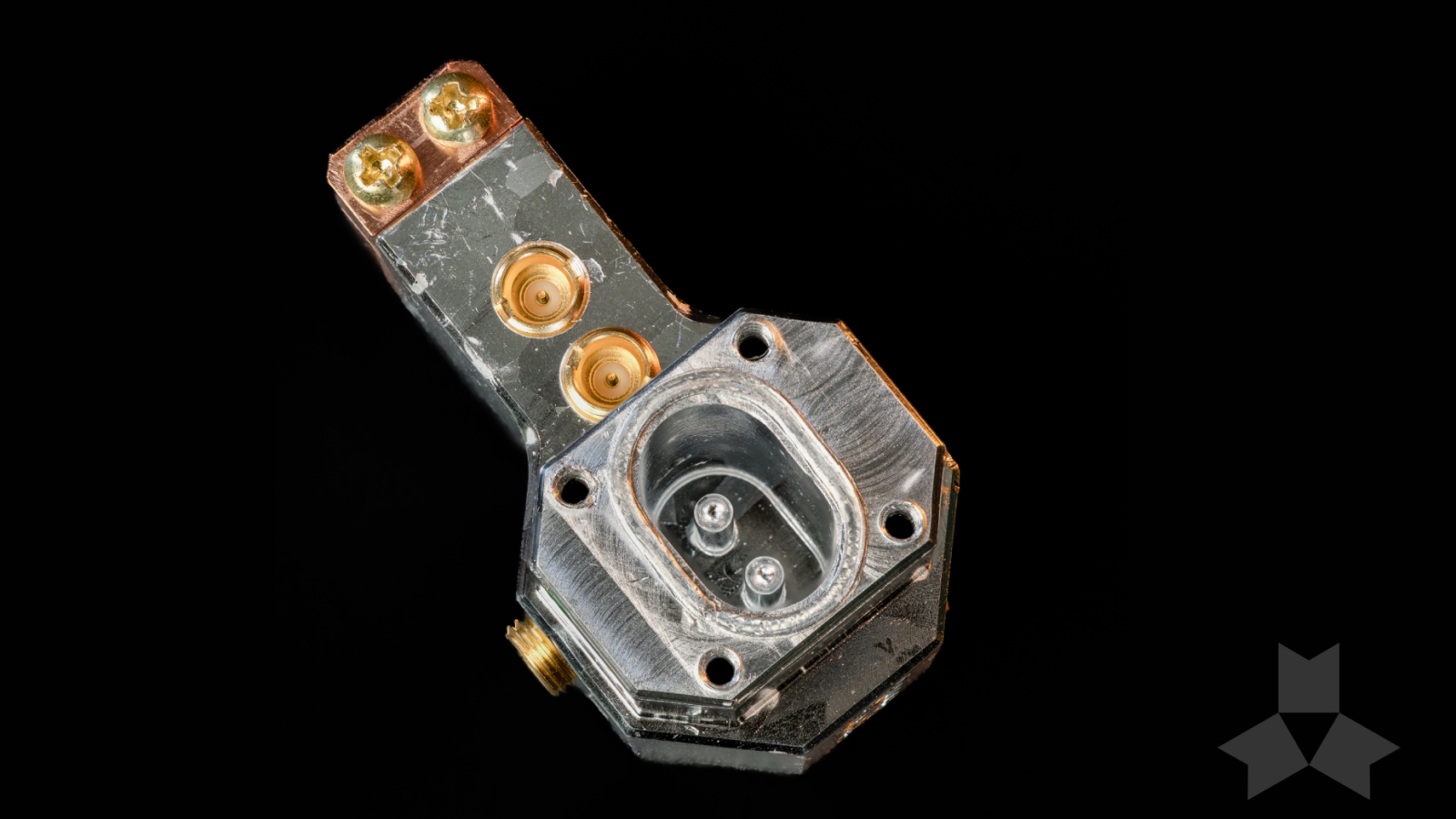'A first in applied physics': Breakthrough quantum computer could consume 2,000 times less power than a supercomputer and solve problems 200 times faster
Scientists have built a compact physical qubit with built-in error correction, and now say it could be scaled into a 1,000-qubit machine that is small enough to fit inside a data center. They plan to release this machine in 2031.

Quantum computers capable of outperforming today’s fastest supercomputers may not need to be as large or power-hungry as we thought, researchers at Canadian startup Nord Quantique say.
The company has built a quantum bit (qubit) with built-in error correction, eliminating the need for the large clusters of physical qubits typically required for fault-tolerant quantum computing.
Nord Quantique plans to scale this design into a 1,000-logical-qubit machine by 2031. The system would be compact enough to fit inside a data center and require far less energy than current platforms, researchers said.
The announcement follows a 2024 milestone in which the company demonstrated a working prototype of its "bosonic qubit" — a device that integrates quantum error correction directly into its hardware. In a statement, Nord Quantique representatives described the new architecture as "a first in applied physics" and a practical route toward scalable, utility-grade quantum machines. The breakthrough addresses a longstanding challenge in quantum computing: maintaining the integrity of quantum information over time.
Quantum bits are extremely sensitive to heat, vibration and electromagnetic interference — even when cooled close to absolute zero (–460°F, or –273°C). Most quantum platforms address this using quantum error correction, which combines many physical qubits to form a single logical unit capable of absorbing and correcting errors through redundancy, so that any single failure doesn’t scrub the entire calculation.
Related: Quantum computers are here — but why do we need them and what will they be used for?
However, creating a single logical qubit traditionally requires dozens or even hundreds of physical qubits, significantly increasing the size, complexity and energy cost of a quantum computer. Nord Quantique’s system avoids this by using a single physical component to perform the role of a logical qubit.
Get the world’s most fascinating discoveries delivered straight to your inbox.
Quantum computing in safe mode
At the core of the design is a superconducting aluminum cavity known as a bosonic resonator, cooled to near absolute zero. This cavity contains light particles (photons) that store quantum information in specific electromagnetic patterns formed within the resonator. These patterns, known as "modes," each represent a different way the field resonates inside the cavity, allowing the same quantum state to be encoded in parallel.
By distributing information across multiple modes within the same physical structure, the qubit can identify and correct certain types of interference. If one mode is disrupted, the others provide enough context to restore the correct state. This method, known as multimode encoding, gives each qubit internal fault tolerance, reducing the need for external error correction and enabling a 1:1 ratio between physical and logical qubits.

The researchers estimated that a 1,000-logical-qubit machine built on this architecture would occupy just 215 square feet (20 square meters) and consume only a fraction of the energy used by high-performance systems today.
They also calculated that a quantum computer built using their architecture could break a 830-bit RSA encryption key in an hour, consuming just 120 kilowatt-hours of energy. By comparison, a supercomputer would require nine days and 280,000 kilowatt-hours to solve the same problem, they said.
"The amount of physical qubits dedicated to quantum error correction has always presented a major challenge for our industry," Julien Camirand Lemyre, chief executive at Nord Quantique, said in a statement. "Multimode encoding allows us to build quantum computers with excellent error correction capabilities, but without the impediment of all those physical qubits."
To make the system more fault-tolerant, the researchers used a "bosonic code" called Tesseract code. This helps guard against common quantum faults such as bit flips, phase flips, control errors and leakage, where the qubit slips into a state that isn’t part of the system used to store and process information. Leakage is hard to correct because most error correction techniques only work inside the expected set of quantum states and can’t spot when something falls outside it.
To test the system’s reliability, the researchers ran repeated rounds of error correction and filtered out results where the qubit didn’t behave as intended.
About 12.6% of runs were filtered out, they said. In the remaining data, the qubit held its state through 32 rounds of error correction without measurable decay, suggesting that multimode encoding can preserve quantum information reliably under stable conditions.
Nord Quantique plans to release a 100-logical-qubit machine by 2029, with the full 1,000-qubit system scheduled for 2031. "Beyond their smaller and more practical size, our machines will also consume a fraction of the energy,” said Camirand Lemyre. "That makes them especially appealing to [high-performance computing] HPC centers where energy costs are top of mind."
Owen Hughes is a freelance writer and editor specializing in data and digital technologies. Previously a senior editor at ZDNET, Owen has been writing about tech for more than a decade, during which time he has covered everything from AI, cybersecurity and supercomputers to programming languages and public sector IT. Owen is particularly interested in the intersection of technology, life and work – in his previous roles at ZDNET and TechRepublic, he wrote extensively about business leadership, digital transformation and the evolving dynamics of remote work.
You must confirm your public display name before commenting
Please logout and then login again, you will then be prompted to enter your display name.



